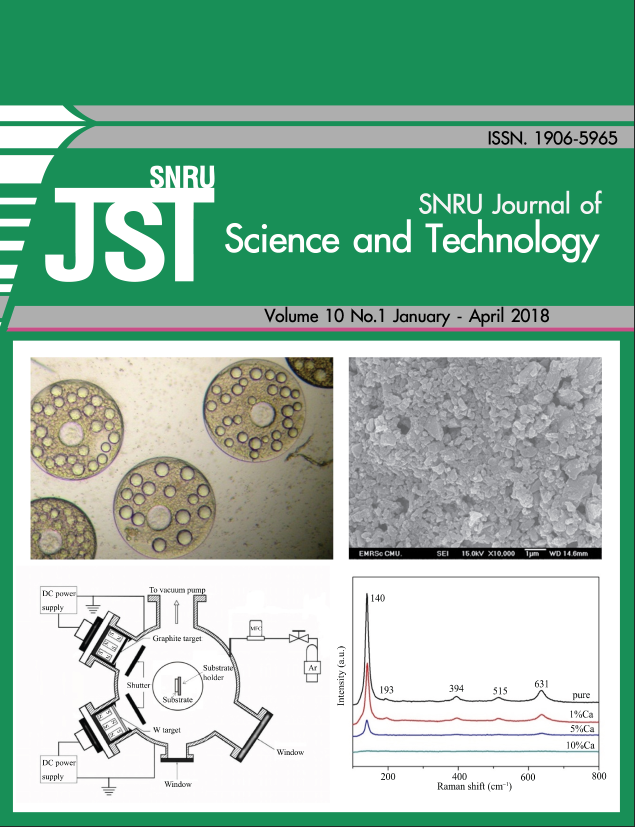Molecules interaction between copper phtholocyanine and volatile organic compounds with applying for gas sensor by Monte Carlo simulation
Keywords:
CuPc, benzene, DFT, hopping model, carrier mobilityAbstract
The molecular interaction of copper phthalocyanine (CuPc) and volatile organic compounds (VOCs, benzene) has been studied by density functional theory (DFT). The VOCs molecule in this study was benzene on the top of copper phthalocyanine molecule. The DFT used for geometry optimization of these molecules and the electric field was applied perpendicularly the planar molecules with the range of 3 – 10 MVcm–1. The results of applied electric field lead to change of molecular orbital energy level with calculating the half splitting of Homo and LUMO (apparent transfer integral). The Monte Carlo technique and Marcus-Levich-Jortner (MLJ) formalism for calculating the hopping rate from apparent and effective transfer integral were used in this simulation. Sum of hopping distance and hopping time were collected with simulation 109 cycles in this range of applied electric field for calculating the carrier mobility. Other statistic parameters were collected for example, the number of carrier hopping along and against electric field. The result of carrier mobility for CuPc gas sensor of benzene was higher than carrier mobility of pure CuPc along b direction.









